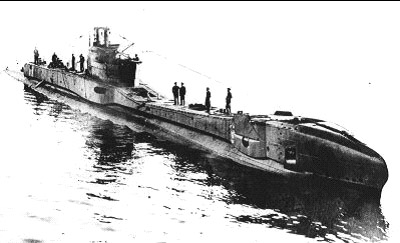The misfortunes of the Indian evacuees
83 years ago, the civilian population was evacuated from Gibraltar. Joe Gingell tracks the ill-fated voyage of the Rock’s Indian community and documents how their journey ended on the soil of the German Reich.

The Gibraltar evacuees were one of the few civilians who crossed the Atlantic Ocean, twice, during the Second World War. The reasons why they were not attacked could only be deduced to pure luck. However, the Indian evacuees who opted to sail via the Indian Ocean, were not so lucky. They suffered a series of misfortunes, leading to the worst – a significant loss of life and the survivors interned in a German concentration camp.
When the order for the evacuation of the Gibraltar civilian population was enforced, members of the Gibraltar Indian community who were deemed to be evacuated, naturally, opted to be evacuated to India to join their families. One of the survivors recalling the ordeal he lived said that, with the benefit of hindsight, they should have opted to be evacuated with the rest of the Gibraltar evacuees to London, Madeira or Jamaica.
Some members of the Gibraltar Indian community before the war
At the very outset, they suffered their first setback. Their last chance to be evacuated to India was on the 8 June 1940 on the British liner, the SS Kemmendine. She had been scheduled to sail to India via the Suez Canal. However, by then, it was perceived that Italy would join the war against Britain. In view of this, it was considered safer for the SS Kemmendine to sail round the Cape of Good Hope. The second stroke of bad luck came on the 26 June when they reached Cape Town where passengers were allowed to land for a few hours. By then the Indian evacuees felt that they had already travelled through the riskiest part of their journey. During their short stay in Cape Town, many of the Indian evacuees decided to send telegrams to their families in India to say that soon they would be united. By sending the telegrams, they did not realise that they were giving the enemy the position and route of the SS Kemmendine.
On the 13 July, the SS Kemmendine was within a couple of days from reaching Colombo. By then the Indian evacuees were feeling joyful that very soon they would be far removed from the theatre of war and united with their families. However, in their third stroke of bad luck, all their dreams were shattered when the German raider Atlantis, camouflaged as a merchant ship, intercepted the SS Kemmandine. Thinking that it was a troop ship, the Atlantis fired two torpedoes and some shells, but then noticed that the SS Kemmendine was only carrying unarmed civilians. The Captain of the SS Kemmendine signalled to the Atlantis that it was surrendering.
The sinking of the SS Kemmendine
Fortunately, there were no casualties and all the passengers were transferred to the Atlantis, from where the prisoners witnessed how the SS Kemmendine sank. On the 1 August, the Atlantis captured the Norwegian vessel SS Tirranna in the south of the Indian Ocean. Most of the prisoners, including all the Indian evacuees, were transferred to the SS Tirranna which was then ordered to sail to France via South Africa.
The Tirranna was carrying about 270 prisoners and, after fifty days at sea, she reached the Bay of Biscay flying the German flag. On 22 September, as if an omen of bad luck was constantly following the Indian evacuees, they suffered the worst of their misfortunes. When the SS Tirranna was near the Gironde estuary, the British submarine HMS Tuna spotted the SS Tirranna flying the German flag and fired three torpedoes.
Many of the prisoners were watching the scenery on the upper deck when three bangs were heard at short intervals. Within minutes, the SS Tirranna began to list heavily and very shortly started to sink very fast taking 87 lives. The survivors spent a few hours clinging to debris before they were eventually rescued by German vessels. Among the survivors of the Indian evacuees was 8-year-old Krishna Khubchand, who was placed on a raft by the family cook also evacuated from Gibraltar. Krishma’s parents, three sisters and two brothers were among the Indian evacuees who lost their lives. Also among the survivors were Mr Hotu Khemchand Mahtani and his expecting wife, Rukmani, who shortly gave birth at Royan’s St Marthe’s Clinic in German-occupied France.
The baby was named Monica after the German doctor’s daughters. They were later sent to a concentration camp in Germany where they remained until liberated by Allied troops in 1945. Krishna Khubchand was looked after by a friend of his father in France. Eventually, they crossed into Spain travelling to Algeciras to join other relatives there. Because they could not come back to Gibraltar, they went to Tangier where they stayed until they could be repatriated at the end of the war.









